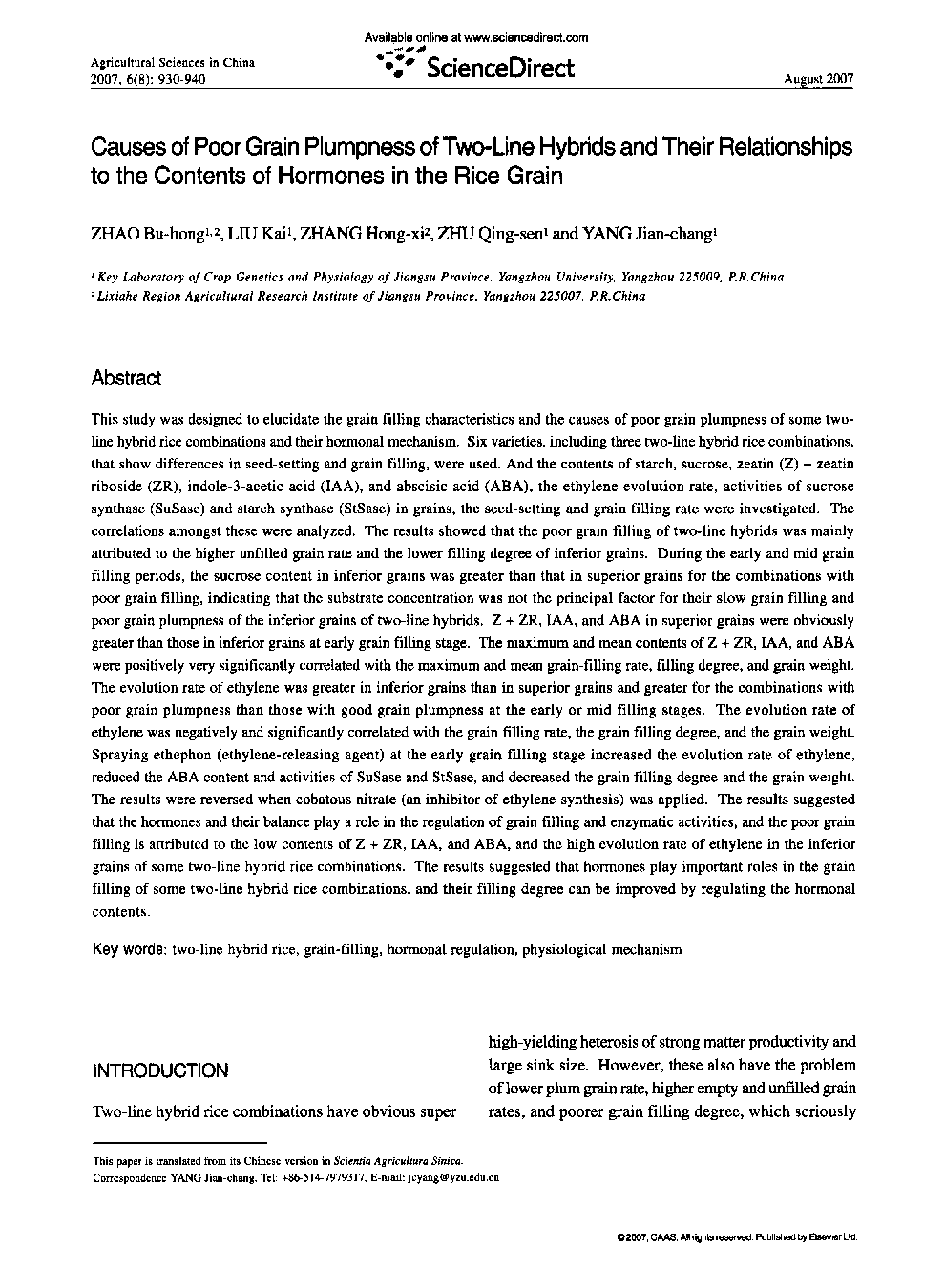| Article ID | Journal | Published Year | Pages | File Type |
|---|---|---|---|---|
| 4490790 | Agricultural Sciences in China | 2007 | 11 Pages |
This study was designed to elucidate the grain filling characteristics and the causes of poor grain plumpness of some two-line hybrid rice combinations and their hormonal mechanism. Six varieties, including three two-line hybrid rice combinations, that show differences in seed-setting and grain filling, were used. And the contents of starch, sucrose, zeatin (Z) + zeatin riboside (ZR), indole-3-acetic acid (IAA), and abscisic acid (ABA), the ethylene evolution rate, activities of sucrose synthase (SuSase) and starch synthase (StSase) in grains, the seed-setting and grain filling rate were investigated. The correlations amongst these were analyzed. The results showed that the poor grain filling of two-line hybrids was mainly attributed to the higher unfilled grain rate and the lower filling degree of inferior grains. During the early and mid grain filling periods, the sucrose content in inferior grains was greater than that in superior grains for the combinations with poor grain filling, indicating that the substrate concentration was not the principal factor for their slow grain filling and poor grain plumpness of the inferior grains of two-line hybrids. Z + ZR, IAA, and ABA in superior grains were obviously greater than those in inferior grains at early grain filling stage. The maximum and mean contents of Z + ZR, IAA, and ABA were positively very significantly correlated with the maximum and mean grain-filling rate, filling degree, and grain weight. The evolution rate of ethylene was greater in inferior grains than in superior grains and greater for the combinations with poor grain plumpness than those with good grain plumpness at the early or mid filling stages. The evolution rate of ethylene was negatively and significantly correlated with the grain filling rate, the grain filling degree, and the grain weight. Spraying ethephon (ethylene-releasing agent) at the early grain filling stage increased the evolution rate of ethylene, reduced the ABA content and activities of SuSase and StSase, and decreased the grain filling degree and the grain weight. The results were reversed when cobatous nitrate (an inhibitor of ethylene synthesis) was applied. The results suggested that the hormones and their balance play a role in the regulation of grain filling and enzymatic activities, and the poor grain filling is attributed to the low contents of Z + ZR, IAA, and ABA, and the high evolution rate of ethylene in the inferior grains of some two-line hybrid rice combinations. The results suggested that hormones play important roles in the grain filling of some two-line hybrid rice combinations, and their filling degree can be improved by regulating the hormonal contents.
